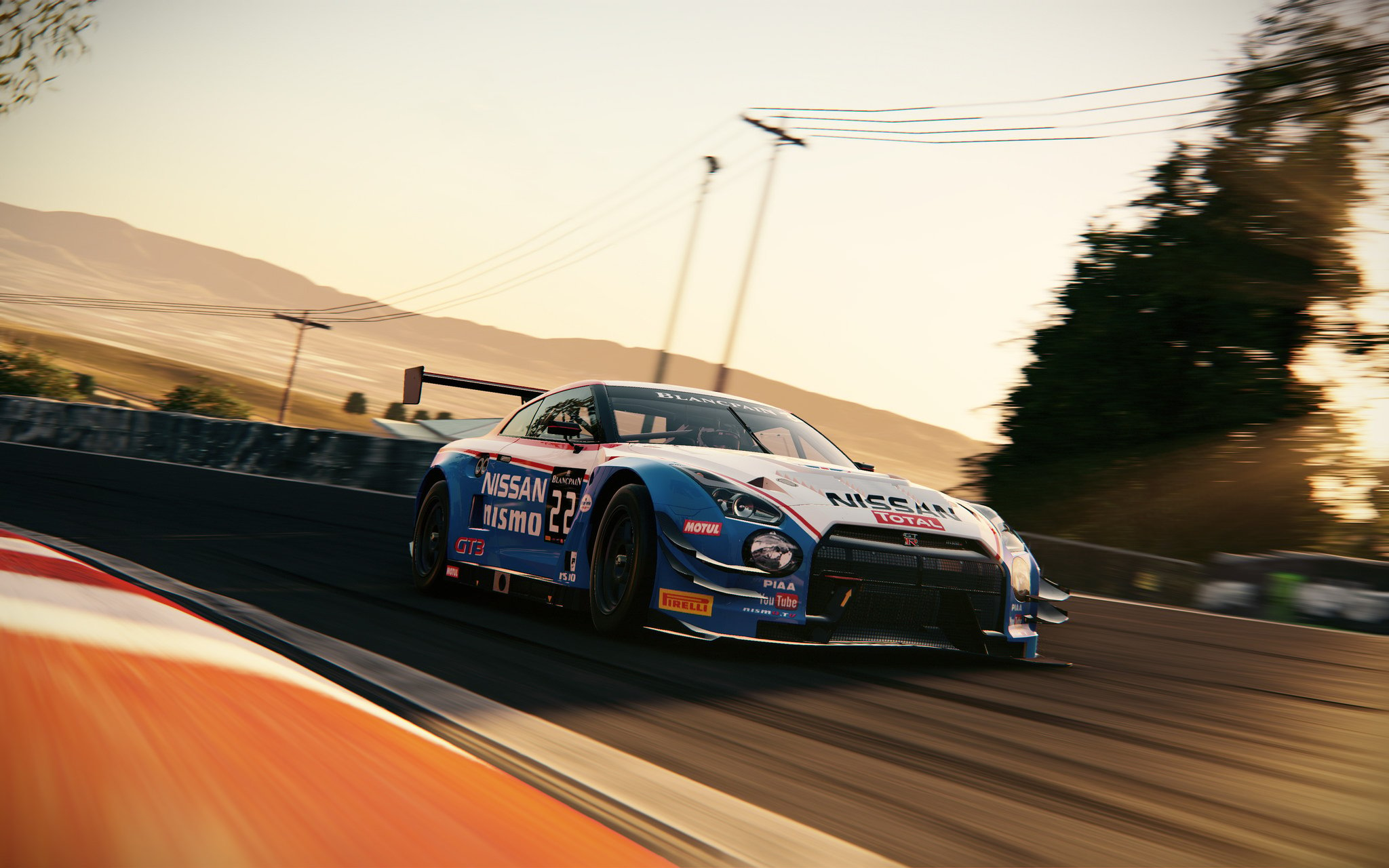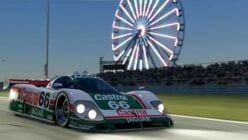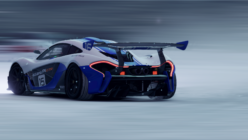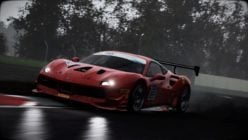It’s hard to believe, but Project CARS 2 launched way back in late September 2017.
Slightly Mad Studios’ sophomore entry in the franchise kicked off the busiest month of sim racing we had seen in years. PCARS2 showed up September 22, only a week before Forza Motorsport 7 and less than a month prior to Gran Turismo Sport. Sure, there was a week last month that challenged that quick-fire rate, but these were all big-name titles. Sim racers were spoiled for choice.
First up to bat is a double-edged… er, bat. Bats don’t have edges, but stay with us here. On the one hand, SMS would have less competition on store shelves. It had the realistic, multi-discipline, track-based new racer market cornered, if even for only a few weeks. But it also meant not knowing exactly what shape the competition would take, and how it would counter PCARS2’s multiple strengths with its own.
During that flurry of triple-A game launches, we promised we’d revisit them all down the road. “As a sim to emulate multiple real-world disciplines, this is the best choice on the market,” said yours truly in our original Project CARS 2 review. But in these always-connected times, launch is just the beginning. So what’s Project CARS 2 like one year later?
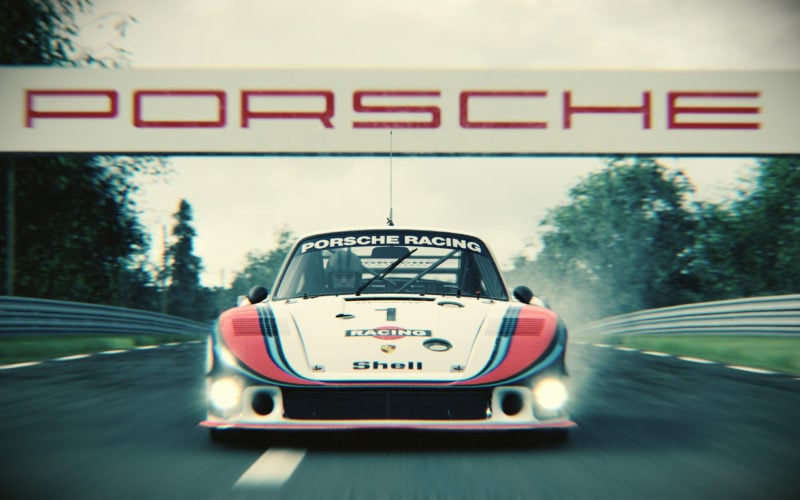
What’s Changed Since Release
Slightly Mad was exactly how we’d describe the post-launch support of the first Project CARS. This was a team with less personnel and a smaller budget than its direct competition. Nonetheless, SMS put out a new update every month for a year. It was hugely ambitious — and arguably needed for some aspects of the game — but Ian Bell & Co wisely chose a less hectic schedule for PCARS2.
The team hit the ground running early on, however. The first major update landed only a few weeks after launch, squashing numerous bugs. There were a lot of strange niggles in version 1.0, including superpowered AI when you skipped qualifying and inconsistent pad assists. SMS buckled down and made plenty of small QOL improvements, from here right through to the most recent 7.1 patch that arrived last month.
Like just about every game out there these days, PCARS2 had a consistent schedule of post-launch content. The first expansion, landing three months after release, was arguably the weakest. Sure, it had “fun” literally in the name, but it lacked the more focused themes and big-draw names of the latter packs.
Up next was Porsche. Every franchise out there was rushing to include Stuttgart’s finest in the wake of the EA exclusivity deal finally dying. Slightly Mad had already included a healthy lineup of Porsches in the base game, and the Porsche Legends pack expanded on that with a nine-car roster deserving of the title.
The Porsche Legends DLC also bolstered one of PCARS2‘s more unique calling cards: manufacturer test tracks. The vanilla game came with Mercedes’ Northern Circle ice track, and this pack brought Porsche’s own FIA-certified Leipzig circuit. Half a year later, Ferrari’s Fiorano test track arrived.
Ah yes, Ferrari. Enzo’s cars showed up last month, as the fourth and final content pack SMS had planned for the game’s life. Like the Porsche pack, this featured a variety of old and new cars, plus two tracks. Fiorano wasn’t alone: Italy’s Mugello came too, further expanding what was already clearly the best track list in the genre.
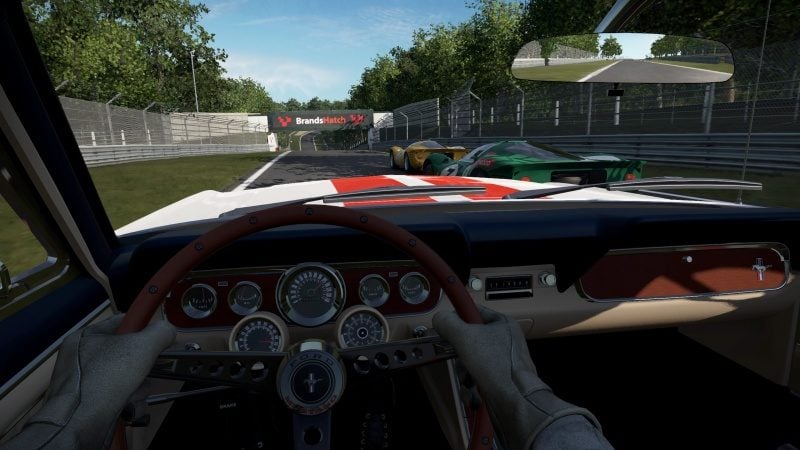
What It Got Right
We can’t stress that last point enough: the track list in Project CARS 2 is second to none. Even in the base game, players had 58 different locations with over 140 layouts to master. You know how in other games, you tend to have a hard time deciding on which car to drive next? Yeah, that, but with tracks.
But should you take on the Nürburgring in optimal summer temps, or try your luck in the unforgiving chill of winter? PCARS2 added weather to the mix, effectively quadrupling the amount of tracks players would need to commit to memory. Combine that with LiveTrack 3.0; SMS’ name for a living, breathing circuit. The track rubbers in as each vehicle carves through the racing line. The sun — and its angle — determines how quickly the surface dries.
Once you’d finally settled on the car, track, weather, and time of day, PCARS2 throws you out onto the track. This is where it could all fall apart, but this is a title that delivers on its simulation promises.
Players on a default console controller will no longer feel lost at sea like the first game. Pad handling still needed some fine tuning back at launch, but revisiting it this week, the DS4 felt even better resolved than we remembered. We were able to wheel new and old cars alike around circuits with confidence.
Of course, Project CARS 2 is a title that begs for a full wheel setup. Most players will probably want to tinker with the stock settings to get the most out of their rigs. Mercifully, SMS simplified this aspect of the game, with clearer explanations of each feature.
Put in the time to get everything just so, and Project CARS 2 gels into a magical driving experience. Something as simple as pulling the handbrake and chucking a Lancer Evo around in the snow feels brilliant. On the other end of the spectrum, you can have a long, drawn-out battle with the AI throughout an endurance.
The sweat really starts to form when you’re out there nursing a worn set of tires, maintaining a reasonable gap over the car behind, and a drop of rain hits the windshield. The weather effects in PCARS2 are natural, variable, and best of all, believable. Race strategy is a real thing here, and the ever-changing nature of the tracks themselves only adds to that. It makes every other one of its competitors feel just a little simple.
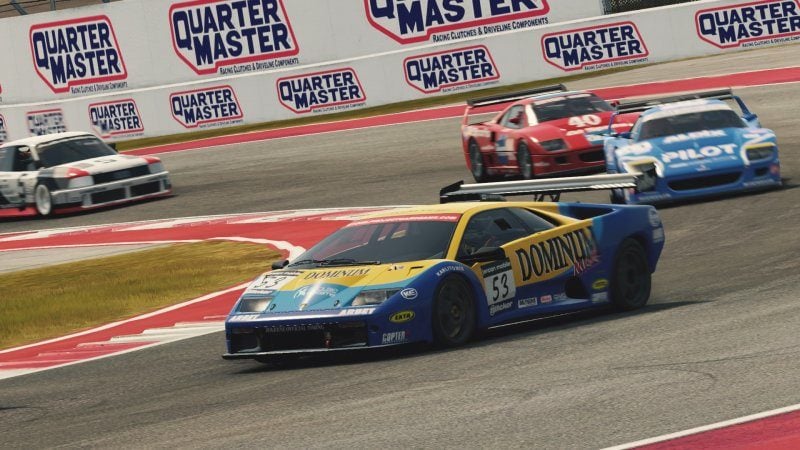
What It (Still) Gets Wrong
Simple would be a good word to describe the menus. They’re better than the first game, but there’s still a disappointing lack of flow to them. Some screens require a seemingly-random button press to access certain options — there’s a reason a legend is almost always on screen. And the lag on the car select screen remains, a year after release.
Online racing is a bit of a let down. It’s entirely possible to have a good — no, great — experience online, but it’s all dependant on player-created rooms on consoles. What this does is fracture an already small community: if there’s nobody out there driving the class or specific car you want, your only option is to start a new room and hope people join.
Letting players create custom public lobbies is a good thing (take note, Forza), but a set of ready-made challenges alongside is even better. Both GT Sport and FM7 have those, and it makes it a cinch to hop online and very quickly find yourself in a race. This is all the more frustrating because PCARS2, much like Sport, features a driver rating system. It practically begs for a hopper system!
These two blots on the report card combine to make PCARS2 seem a little more unapproachable to all but the most hardcore. It’s too bad; there’s a lot of aids to help folks get to grips with driving a full-bore race car. These even include the very helpful Race Engineer, who will do the tuning for you; all you need to provide are some answers to his questions.
Other deficiencies are less of a concern. The graphics are perfectly acceptable when one considers how much extra lifting this game is doing behind the curtains over its console brethren. Photo mode shows SMS has solid car models, even if the mode itself is lagging behind the competition (and still has an aliasing problem). It may sound like a cop-out, but it’s really not: if you’re in the middle of a thrilling drive, these concerns quickly melt into the background.
But the biggest problem? The game’s launch. It’s no secret the original was buggy. Slightly Mad went to great lengths to assuage fears that would happen again. Studio head Ian Bell stated the game was entering QA as early as Christmas 2016, so to see so many little niggles — including ones carried over from the previous game — turned some players off. The game is (naturally) much more solid now, but you know what they say about first impressions.
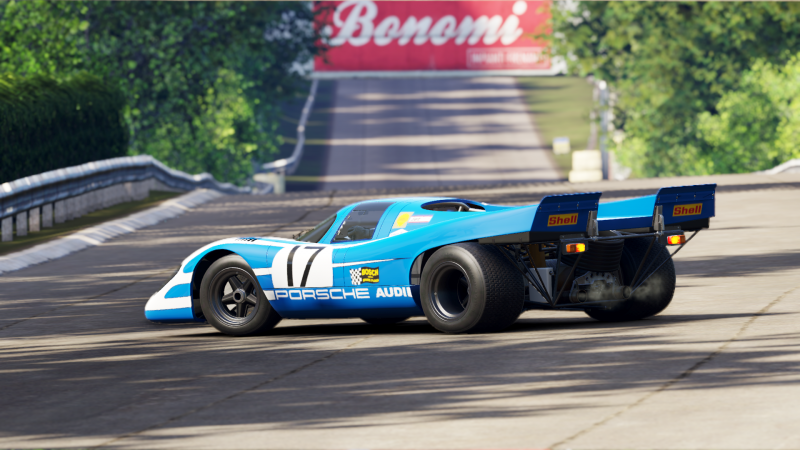
What’s Next?
That’s a good question. Slightly Mad Studios has been surprisingly quiet for months. Patch notes have become short and vague. It seems like support for Project CARS 2 is drying up.
The team is certainly keeping busy. There’s the rumored Fast & Furious game that Ian Bell teased last year, for starters. More recently Paul “Rushy” Rustchynsky joined the team. He’s a man with plenty of arcade-oriented experience (Onrush, Driveclub, Motorstorm), and would make an excellent lead for a game focused on Toretto & Co.
There’s also Project CARS GO, a mobile game that should borrow heavily from PCARS2.
As for a direct sequel? So far there’s no sign of one. It’s an awkward time, too: PCARS2 arrived just over two years after the last title. Fast forward that same amount and that’d put a would-be Project CARS 3 as an early 2020 release. Rumor has it the next generation of consoles will kick off around that time. Slightly Mad may be holding off on any commitments until it knows for sure what it’s working with.
We hope a sequel does arrive at some point. For all its niggles, Project CARS 2 is certainly ambitious. It shows just how much room there is for the genre to grow. Slightly Mad aimed high here, bolstering dynamic weather and time of day with the seasons and a deep, satisfying physics engine. If it can continue to polish this base, and keep bugs to a minimum at launch, a sequel could ring in a new era for console sim racers.
Featured image courtesy of Cluck.
See more articles on Retrospective Reviews and Slightly Mad Studios.

